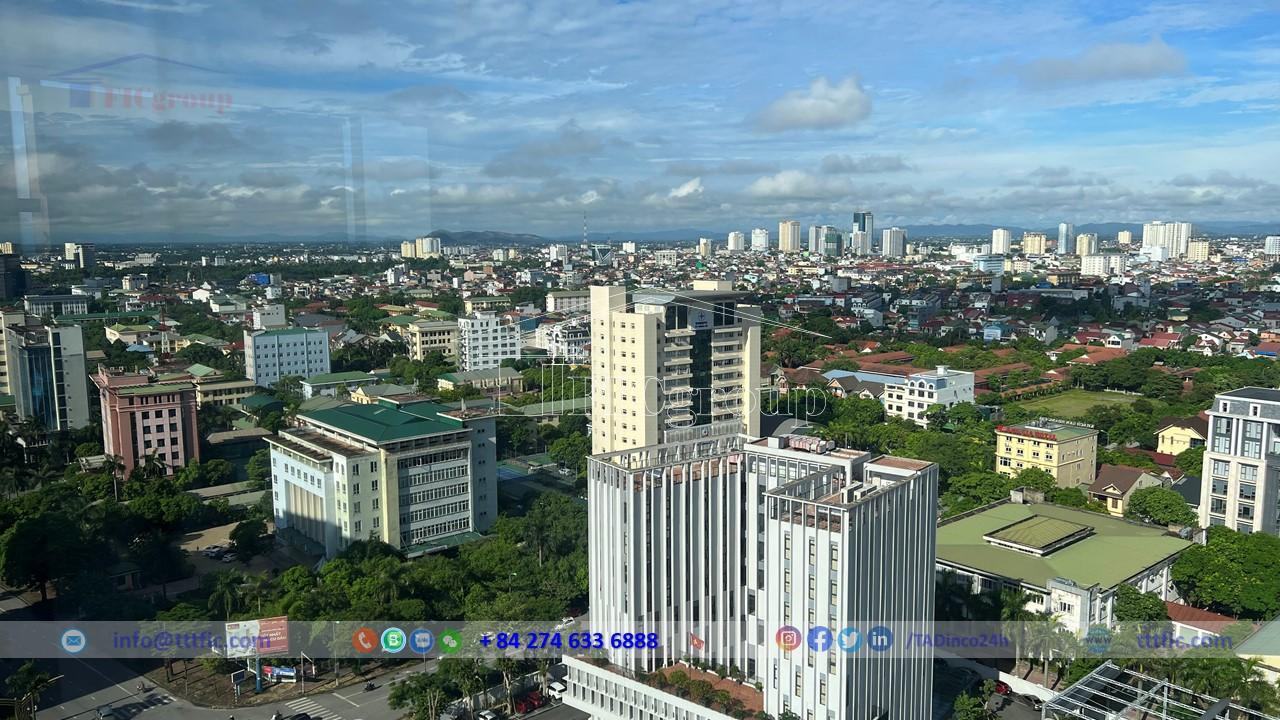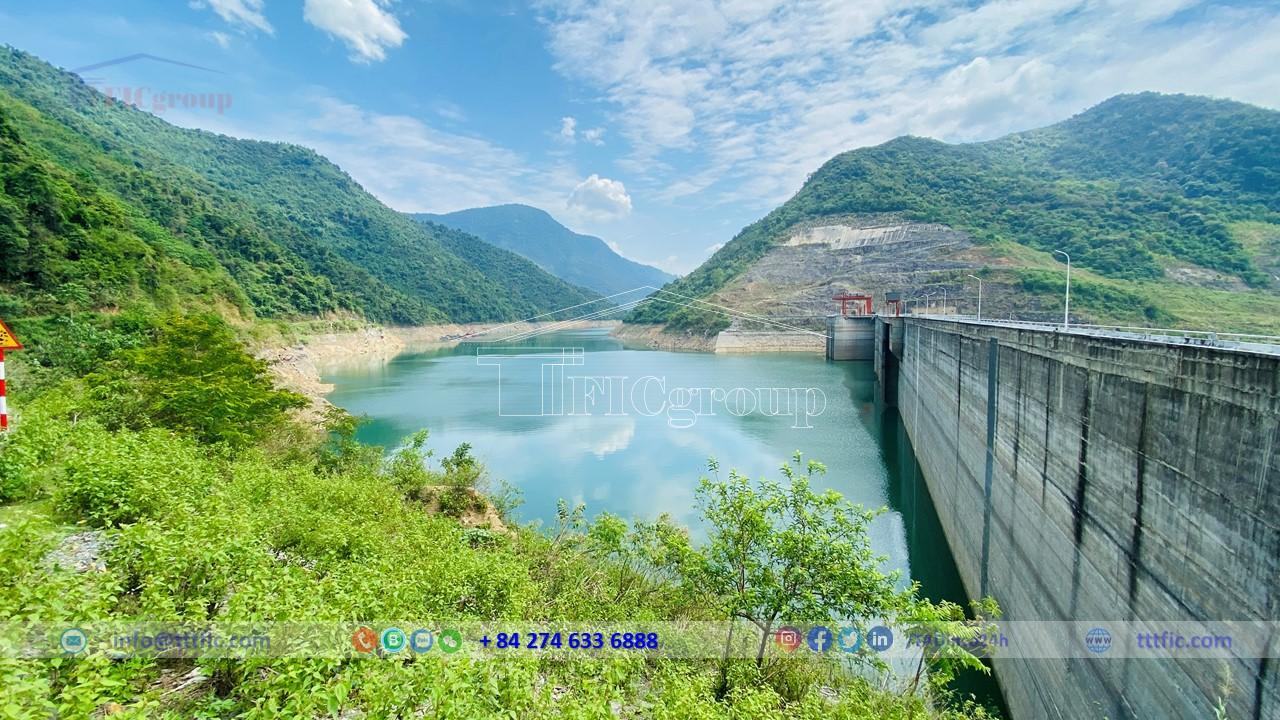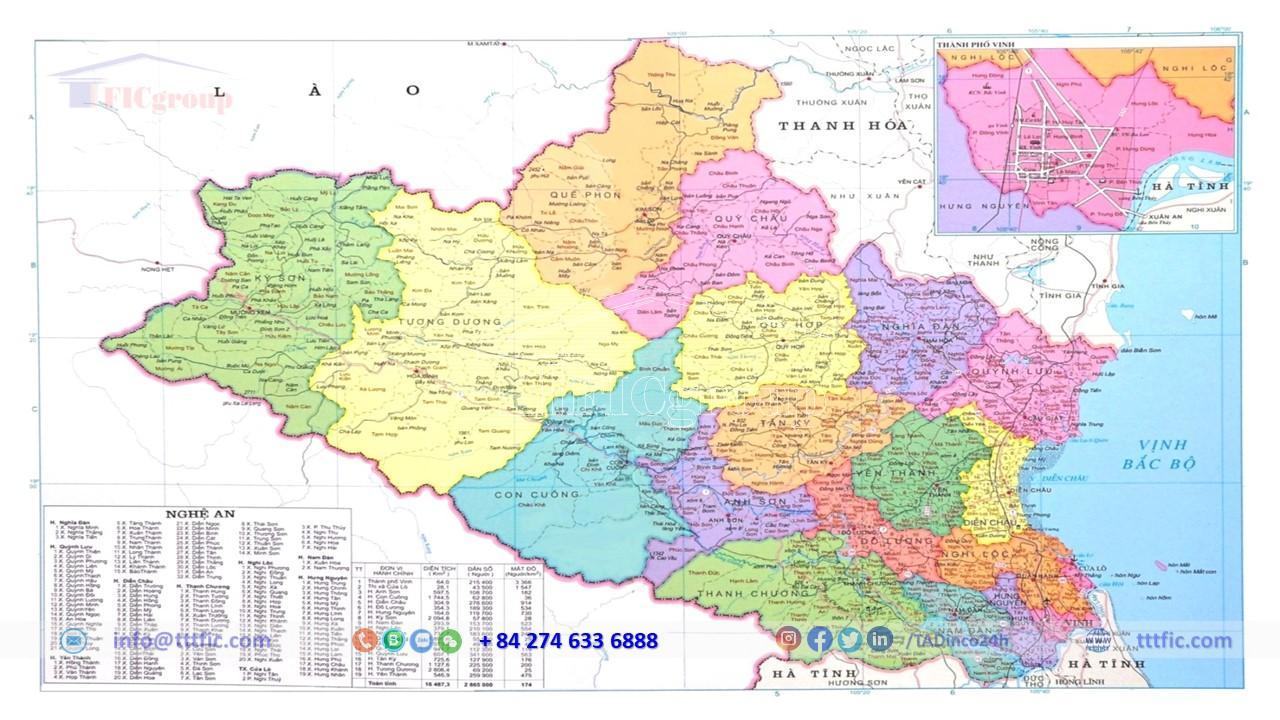Nghệ An province:
Nghệ An province, located in central Vietnam, is one of the largest provinces in terms of area and population. Its capital city is Vinh.
Situated in a strategic geographical position, Nghệ An shares a border with Laos and boasts a long coastline along the East Sea. The province offers various attractive tourist destinations such as Cửa Lò, Quỳnh Côi, Sơn Trà, Kim Liên (the hometown of President Hồ Chí Minh), as well as beautiful mountains like Phu Quy, Pu Mat, and Pu Luông.
Nghệ An is also home to an important cultural heritage, the Đền Hùng National Relic, considered the worship place of the Hùng Kings who founded the Vietnamese civilization and nation.
With a diverse economy, Nghệ An relies primarily on agriculture, industry, and services. It is among the developed provinces with high potential in the Central Vietnam region.
Nghệ An is a coastal province situated in the northern part of the North Central Coast region of Vietnam, and it has the largest territorial area among all provinces in the country.
Previously, Nghệ An and Hà Tĩnh shared the same name, Hoan Châu (during the Lý Dynasty), Nghệ An châu (during the Lý and Trần Dynasties), and later as Xứ Nghệ (since 1490 during the reign of King Lê Thánh Tông). In 1831, King Minh Mạng divided the region into two provinces: Nghệ An (north of the Lam River) and Hà Tĩnh (south of the Lam River). From 1976 to 1991, Nghệ An and Hà Tĩnh were merged into one province called Nghệ Tĩnh. Since 1991, Nghệ Tĩnh has been separated again into two provinces, Nghệ An and Hà Tĩnh, as they are known today.
Geography of Nghệ An province:
Geographical location:
Nghệ An Province, located in the North Central Coast region, has the following geographical features:
– It is situated to the east, adjacent to the East Sea.
– It shares its western border with Xieng Khouang Province, Laos.
– To the southwest, it borders Borikhamxay Province, Laos.
– In the northwest, it is adjacent to Huaphan Province, Laos.
– To the south, it borders Ha Tinh Province .
– Thanh Hoa Province is its northern neighbor.
The province has notable extreme points:
– The northernmost point is in Thong Thu Commune, Que Phong District.
– The easternmost point is in Quynh Lap Commune, Hoang Mai Town.
– And the westernmost point is in Muong Ai Commune, Ky Son District.
– The southernmost point is in Nam Kim Commune, Nam Dan District.
The provincial capital and administrative center is Vinh City, located 291 km south of the capital city, Hanoi. Nghệ An Province has a land border of 419 km and an 82 km coastline along the East Sea.
Natural condition:
Nghệ An province, situated in a tropical monsoon climate zone, experiences two distinct seasons: summer and winter. The dry and hot southwest monsoons influence the province from April to August, while the cold and humid northeast monsoons prevail during winter. With a 419 km long border with Laos, Nghệ An boasts the longest land border among all provinces in Vietnam.
Covering an area of 16,490.25 km², the province receives an average annual rainfall of 1,670 mm. The average temperature hovers around 24.6 °C, and there are approximately 1,420 hours of sunshine per year. The average relative humidity ranges from 86% to 87%. Nghệ An spans from 18°33′ to 19°25′ north latitude and from 102°53′ to 105°46′ east longitude.
Nghệ An exhibits diverse geographical features, incorporating high mountains, midlands, plains, and coastal areas. The western region is dominated by the North Truong Son mountain range, encompassing 10 districts, including 5 highland districts. UNESCO has recognized 9 of these mountainous districts as part of the Nghệ An Western Biosphere Reserve, a globally recognized biosphere reserve. The remaining districts and towns are situated in the midlands and along the coast, with Hoàng Mai, Quỳnh Lưu, Diễn Châu, Nghi Lộc, and Cửa Lò located in coastal areas.
Economy:
Nghệ An province experienced impressive economic growth in 2021 despite the challenges posed by the Covid-19 pandemic. With a GDP growth rate of 6.20%, the province ranked third in the North Central Coast region and 22nd nationwide. The agriculture, forestry, and fisheries sector contributed 5.59% to the growth, while the industrial and construction sector contributed 13.59%. The service sector saw modest growth of 1.26%. The product tax, excluding subsidies, increased by 6.53%. Notable increases were observed in crop production, livestock products, and fisheries output. However, the service sector, especially accommodation and dining services, faced a decline. Overall, the economic structure comprised 24.57% agriculture, forestry, and fisheries; 29.48% industrial and construction; 40.87% services; and 5.08% product tax. The remarkable growth and sector contributions demonstrate the province’s resilience and progress in 2021.
Agriculture, forestry, and aquaculture production:
Agriculture:
Annual crop production results showed a total cultivated area of 352,367 hectares in 2021, with minor fluctuations compared to the previous year. Rice cultivation covered 179,378 hectares, while corn covered 45,737 hectares. Starchy tuber crops decreased slightly to 17,863 hectares, while vegetable, legume, and flower cultivation increased to 41,632 hectares. In terms of perennial crops, fruit trees covered 22,205 hectares, with an increase in tropical and subtropical varieties. Rubber trees accounted for 9,486 hectares, coffee trees covered 12 hectares, and tea trees covered 11,572 hectares. Livestock farming saw a slight decrease in buffalo population but an increase in cattle, with a notable rise in dairy cows. The total number of pigs reached 930,821, and poultry farming experienced growth, particularly in chicken production. Overall, the agricultural sector in the province remained relatively stable, with moderate changes in crop cultivation and livestock numbers.
Forestry:
The province focused on establishing new forest areas, reaching 19,756 hectares, a 6.60% increase (+1,223 hectares). Favorable weather conditions, including cool temperatures and scattered rainfall, provided high soil moisture, facilitating timely forest planting according to the set plan.
The volume of harvested timber from planted forests in 2021 reached 1,501,791 cubic meters, showing a significant increase of 13.8% (+182,114 cubic meters). The quantity of firewood extracted reached 1,046,662 stacks, a 2.47% increase (+25,273 stacks).
There were 234 cases of forest destruction in 2021, affecting an area of 77.22 hectares. Forest protection measures were consistently emphasized, with enhanced efforts in awareness campaigns, protection, and fire prevention and control.
Aquaculture:
Due to favorable weather conditions for fishermen to venture offshore, the total output of aquaculture and fisheries in 2021 witnessed a considerable increase. The estimated production reached 263,333 tons, showing a growth of 8.27% (+20,109 tons). The extraction volume reached 200,049 tons, marking a 7.92% increase (+14,674 tons), while the aquaculture production reached 63,284 tons, reflecting a growth of 9.39% (+5,434 tons).
The government and provincial authorities implemented various supportive policies concerning investment resources, capital, and aquaculture procedures. They also revised and supplemented the fisheries development policies to align with practical requirements. Strict adherence to seasonal fishing regulations was enforced, prohibiting fishing during the spawning season and the use of environmentally damaging fishing tools and practices.

Industry:
Industrial production has experienced significant growth despite the impact of the Covid-19 pandemic, with several sectors and products achieving substantial growth rates. Additionally, high-value production facilities have commenced operations since the beginning of the year, including the Tân Thắng Cement Plant, An Hưng Garment Factory, and Luxshare ICT Nghệ An Factory.
The industrial production index in 2021 increased by 16.01% compared to the previous year. Specifically, the production and distribution of electricity, gas, hot water, steam, and air conditioning increased by 21.00%. Processing and manufacturing industries grew by 15.69%, while the mining and quarrying industry saw a growth of 14.73%. However, water supply, waste management, and wastewater treatment activities experienced a decline of 1.83%.
Some key products recorded significant growth compared to the previous year, such as non-woven clothing with a 63.15% increase, roofing sheets with a 41.78% increase, and fibers with a 30.59% increase. Cement production rose by 21.84%, Tiền Phong plastic pipes increased by 20.16%, and clinker production witnessed a growth of 16.34%. On the other hand, certain products experienced a decline, including beer can lids (-37.30%), timber shavings and sawdust (-21.35%), unfinished tin processing (-19.14%), beer can covers (-18.92%), bottled beer (-15.17%), and sugar (-13.04%).
Business activities:
The importance of businesses in contributing to economic and social development has been recognized by the provincial People’s Committee, which has directed departments and localities to implement coordinated mechanisms and policies to improve the business environment, promote investment, and support enterprise development. They actively identify and resolve obstacles and difficulties faced by businesses.
As of December 17, 2021, there were 1,872 newly registered businesses, representing a 3.14% increase compared to the same period last year, with a total registered capital of 20,098 billion VND, a 29.99% increase. Additionally, 769 businesses resumed their operations, an increase of 156 businesses compared to the same period in 2020. The number of temporarily suspended businesses reached 1,034, with an increase of 214 compared to the same period.
In 2021, there were 1,034 temporarily suspended businesses, an increase of 214 compared to the previous year. The number of branch offices, representative offices, and temporarily closed business locations reached 106, with an increase of 31. Moreover, 145 businesses were dissolved, an increase of 33 units. There were 113 units where branch offices, representative offices, and business locations ceased their operations. Authorities at all levels and sectors proactively identify the difficulties and obstacles faced by businesses to promptly consider, support, and resolve them fairly.
Commerce and services:
Resolution No. 128/NQ-CP, released on October 11, 2021, emphasized the adaptation to Covid-19 challenges and the implementation of effective safety measures. It resulted in a gradual return to normalcy in the service sector. Despite the pandemic’s impact, certain service industries have achieved substantial growth. However, the transportation sector, particularly passenger transportation, has encountered significant difficulties.
Financially, retail sales of goods in 2021 are estimated to reach 66,849 billion VND, reflecting a 2.36% decrease compared to the previous year. The revenue from accommodation, food services, and travel agencies is expected to decline by 30.90%, totaling 5,130 billion VND. Additionally, revenue from other services, excluding the aforementioned categories, is projected to decrease by 19.38%, amounting to 4,829 billion VND.
Conversely, the transportation, warehousing, and transportation support services have witnessed positive growth throughout 2021. The overall revenue is estimated to reach 10,956 billion VND, indicating a 2.51% increase. Notably, revenue from freight transportation has shown an impressive growth rate of 8.81%, reaching 7,464 billion VND. However, revenue from passenger transportation has experienced a decline of 23.10%, totaling 1,857 billion VND. Meanwhile, loading and unloading services and transportation services have seen a promising increase of 13.08%, reaching 1,624 billion VND.
Finance, banking, and insurance:
The budget revenue in 2021 surpassed the allocated plan, enabling effective implementation of budget expenditure tasks. This facilitated the fight against Covid-19 and provided timely support to businesses and individuals, driving economic and social recovery.
Total state budget revenue in 2021 reached an estimated 18,057 trillion VND, exceeding the plan by 28.64% and increasing by 1.23% compared to 2020. Domestic revenue amounted to 16,398 trillion VND, exceeding the plan by 28.29%. Revenue from import-export activities reached 1,655 trillion VND, surpassing the plan by 32.40%.
Local budget expenditure in 2021 was estimated at 27,984 trillion VND, achieving 108.8% of the adjusted plan. Investment expenditure reached 8,500 trillion VND, and regular expenditure amounted to 18,995 trillion VND. Key areas of expenditure included salaries, allowances, support funds for social welfare, and Covid-19 measures.
The province successfully mobilized approximately 175,291 trillion VND, marking an 11.3% increase compared to the beginning of the year. The total outstanding debt of credit institutions reached around 241,853 trillion VND, with a low non-performing loan ratio of 0.67%.
The number of people participating in social insurance, health insurance, voluntary social insurance, and unemployment insurance increased to 2,941,133 individuals. Health insurance coverage reached 91.0% of the population, and benefits were settled for 118,850 people under the social insurance scheme.
In summary, the province’s budget performance in 2021 demonstrated resilience amidst the Covid-19 challenges. The exceeded revenue and effective expenditure supported businesses, individuals, and social welfare programs, fostering economic recovery. Furthermore, the province maintained a low non-performing loan ratio and expanded social insurance coverage.

Social:
Residential:
The population of Nghệ An province, according to the 2019 census, is 3,327,791 people. The province is home to various ethnic groups, including Thái and Mường, alongside the majority Kinh ethnicity. Additionally, at that time, Nghệ An had 37 ethnic groups coexisting with foreign residents.
Preliminary results of the general survey indicated that as of April 1, 2019, Nghệ An had 848,977 households with a population of 3,327,791, ranking fourth in terms of population size nationwide. Over the span of 10 years from 2009 to 2019, the province’s population increased by 415,750 people (from 2,912,041 in 2009), with an average annual population growth rate of 1.33%.
The distribution of population in Nghệ An is uneven. The districts in the delta region such as Diễn Châu, Nghi Lộc, Đô Lương, Quỳnh Lưu, Yên Thành, Nam Đàn, Hưng Nguyên, Vinh city, Cửa Lò town, and Hoàng Mai have high population densities, with over 500 people per square kilometer. In districts like Nghĩa Đàn, Thanh Chương, Quỳ Hợp, Anh Sơn, and Tân Kỳ, the average population density is moderately high, ranging from 130 to 250 people per square kilometer. However, in these districts, high population densities are concentrated in valley areas, while remote mountainous areas have sparse populations. Western districts have population densities below 50 people per square kilometer, such as Quỳ Châu, Con Cuông, Kỳ Sơn, Tương Dương, and Quế Phong. These areas have very low population densities due to challenging terrain, harsh climate, and difficult transportation. Among the coastal districts, Diễn Châu has the highest population, while Thanh Chương is the most populous mountainous district and the only mountainous district in Vietnam with a population exceeding 250,000. The urbanization rate reached 33% by 2021.
Religion:
As of April 1, 2019, the province had 11 different religions with a total of 287,232 followers. The largest religious group was Catholicism with 287,064 followers, followed by Buddhism with 1,079 followers. Other religions included Protestantism with 58 followers, Islam with 12 followers, Minh Lý with five followers, and Hòa Hảo Buddhism, Cao Đài, and Tịnh Độ Cư Sĩ Phật Hội Việt Nam each with three followers. Minh Sư, Baha’i, and Tứ Ân Hiếu Nghĩa had two followers each, and there was one follower of Tứ Ân Hiếu Nghĩa.










